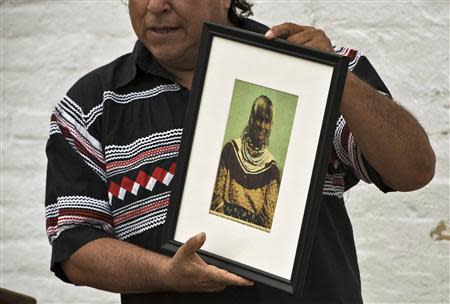Florida Seminoles work to preserve isle where ancestors held
By Saundra Amrhein EGMONT KEY, Florida (Reuters) - As a fog bank rolled in behind them on Sunday afternoon, several members of the Seminole Tribe of Florida disembarked from a double-decker catamaran onto a small island off the coast near St. Petersburg in west-central Florida. It was part of a journey commemorating the history of their ancestors' internment, forced relocation and - for a small handful - dramatic escape. "This is kind of like our holocaust," said Willie Johns, Seminole Tribe member and historian, after he and his travel companions made their way along a sandy pathway through the brush to speak at the foot of the island's historic lighthouse. Johns is a descendent on his father's side of the legendary Polly Parker, one of hundreds of Seminole Tribe members imprisoned at Egmont Key near the mouth of Tampa Bay by federal officials in the 1850s during the Third Seminole War. Those Seminoles who did not perish on the island in the harsh conditions were taken by ship to Florida's Panhandle, where they were then made to continue the journey by land into forced relocation on reservations in the West - a journey the current-day Seminoles label the "Voyage of Tears." On Sunday, they heralded Parker's legendary 1858 escape when the Grey Cloud steamship on which she was held stopped in St. Marks in Florida's Panhandle for more lumber. Parker persuaded federal officials to allow her to look for herbs. Instead, she fled, leading about a dozen other Seminole members into escape, eluding an extensive search by U.S. forces, and eventually returning to her family's camp hundreds of miles south near Lake Okeechobee. "Her progeny became many of the leaders and important figures of the tribe ever since," said Peter Gallagher, a spokesman for the Seminole Tribe. After leaving Egmont Key, the group planned to continue their journey aboard the Florida Fisherman II northward to St. Marks - a 22-hour trip - and then press on for Tallahassee by bus on Monday. Their purpose was twofold: to retrace part of the journey of their ancestors, and to talk with leaders in the state capital about the preservation of Egmont Key. The island, which is a national wildlife sanctuary, is less than half the size it was about 100 years ago due to aggressive erosion. While its white beaches, emerald-colored waters, and inclusion on the National Register of Historic Places due to the lighthouse and the old Fort Dade make it a popular tourist spot for snorkelers and visitors, members of the Seminole Tribe see the erosion as a threat to their history. They fear that their ancestors' buried remains might one day be washed away and under water like the mostly submerged remnants of Fort Dade. "From this day on we can help each other in all we do to preserve this place," Johns said after presenting a framed photo of Parker to Donald Forgione, the director of the Florida Park Service, which oversees Egmont Key. For Edna Bowers of Hollywood, Florida, the journey was a personal one. A direct descendent of Parker, she grew up hearing about the hard times that her ancestors endured and all that they overcame. In the brief stop on Egmont Key, Bowers looked through the historic photographs brought by Woody Hanson of Fort Myers, who says his grandfather - W. Stanley Hanson - was an advocate for the Seminole Tribe and was with Parker when she died. "It means a lot," Bowers said about drawing attention to Parker's story, as organizers hurried to get everyone back on the ferry to return them to the catamaran before the fog worsened. "I wondered," Bowers said, "when she was ever going to be recognized for what she went through." (Editing by Jane Sutton and Eric Walsh)


